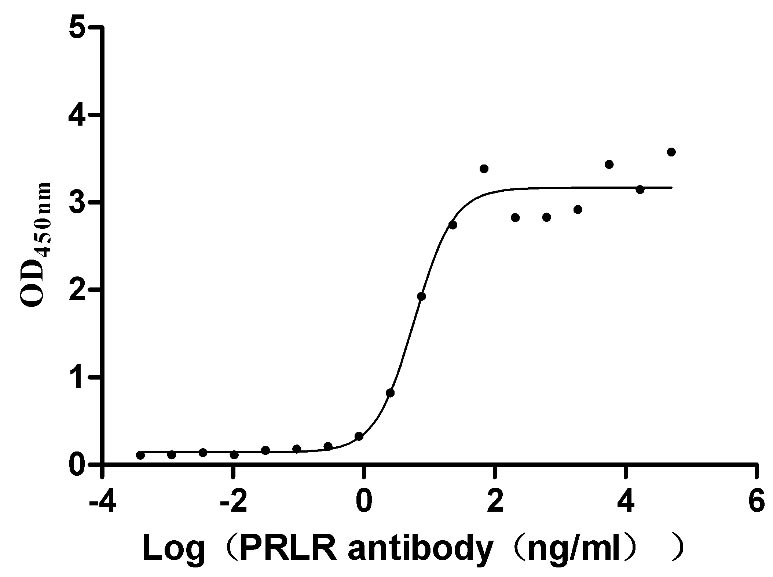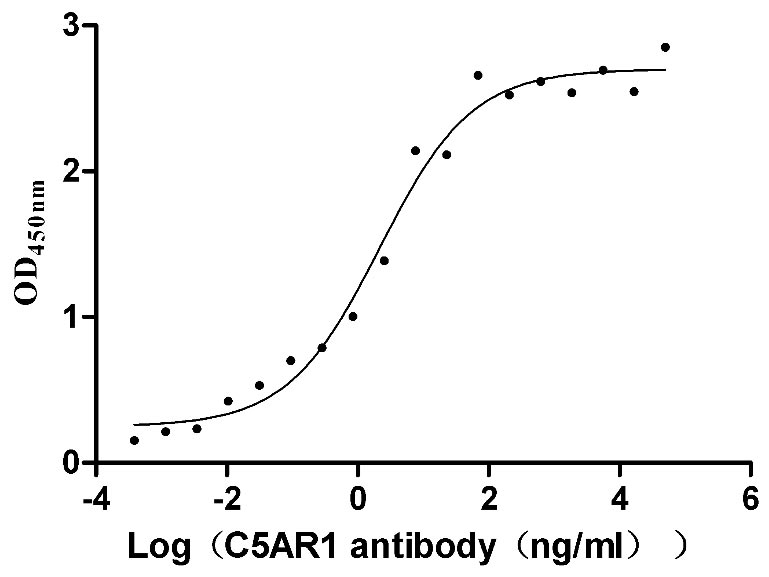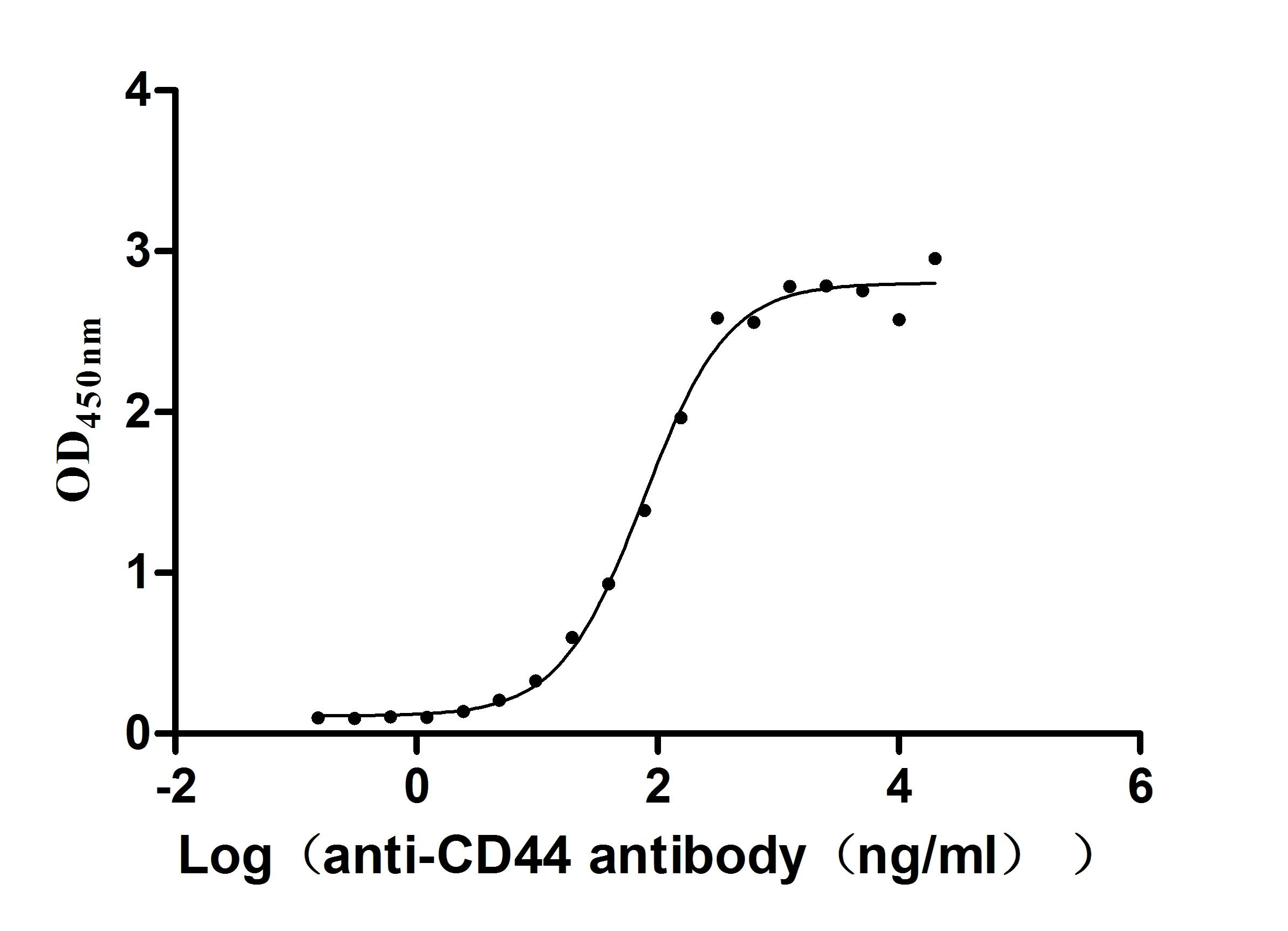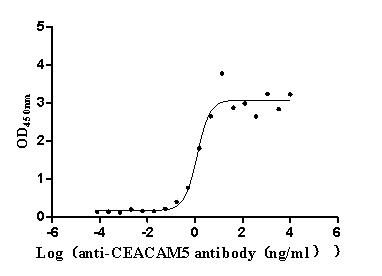Recombinant Human Serine/threonine-protein kinase PINK1, mitochondrial (PINK1), partial
-
中文名稱:人PINK1重組蛋白
-
貨號:CSB-YP863144HU
-
規(guī)格:
-
來源:Yeast
-
其他:
-
中文名稱:人PINK1重組蛋白
-
貨號:CSB-EP863144HU
-
規(guī)格:
-
來源:E.coli
-
其他:
-
中文名稱:人PINK1重組蛋白
-
貨號:CSB-EP863144HU-B
-
規(guī)格:
-
來源:E.coli
-
共軛:Avi-tag Biotinylated
E. coli biotin ligase (BirA) is highly specific in covalently attaching biotin to the 15 amino acid AviTag peptide. This recombinant protein was biotinylated in vivo by AviTag-BirA technology, which method is BriA catalyzes amide linkage between the biotin and the specific lysine of the AviTag.
-
其他:
-
中文名稱:人PINK1重組蛋白
-
貨號:CSB-BP863144HU
-
規(guī)格:
-
來源:Baculovirus
-
其他:
-
中文名稱:人PINK1重組蛋白
-
貨號:CSB-MP863144HU
-
規(guī)格:
-
來源:Mammalian cell
-
其他:
產(chǎn)品詳情
-
純度:>85% (SDS-PAGE)
-
基因名:
-
Uniprot No.:
-
別名:BRPK; FLJ27236; mitochondrial; PARK 6; PARK6; Phosphatase and Tensin Homolog; PINK 1; PINK1; PINK1_HUMAN; Protein kinase BRPK; PTEN induced putative kinase 1; PTEN induced putative kinase protein 1; PTEN-induced putative kinase protein 1; Serine/threonine kinase PINK1 mitochondrial; Serine/threonine protein kinase PINK1 mitochondrial; Serine/threonine-protein kinase PINK1
-
種屬:Homo sapiens (Human)
-
蛋白長度:Partial
-
蛋白標(biāo)簽:Tag?type?will?be?determined?during?the?manufacturing?process.
The tag type will be determined during production process. If you have specified tag type, please tell us and we will develop the specified tag preferentially. -
產(chǎn)品提供形式:Lyophilized powder
Note: We will preferentially ship the format that we have in stock, however, if you have any special requirement for the format, please remark your requirement when placing the order, we will prepare according to your demand. -
復(fù)溶:We recommend that this vial be briefly centrifuged prior to opening to bring the contents to the bottom. Please reconstitute protein in deionized sterile water to a concentration of 0.1-1.0 mg/mL.We recommend to add 5-50% of glycerol (final concentration) and aliquot for long-term storage at -20℃/-80℃. Our default final concentration of glycerol is 50%. Customers could use it as reference.
-
儲存條件:Store at -20°C/-80°C upon receipt, aliquoting is necessary for mutiple use. Avoid repeated freeze-thaw cycles.
-
保質(zhì)期:The shelf life is related to many factors, storage state, buffer ingredients, storage temperature and the stability of the protein itself.
Generally, the shelf life of liquid form is 6 months at -20°C/-80°C. The shelf life of lyophilized form is 12 months at -20°C/-80°C. -
貨期:Delivery time may differ from different purchasing way or location, please kindly consult your local distributors for specific delivery time.Note: All of our proteins are default shipped with normal blue ice packs, if you request to ship with dry ice, please communicate with us in advance and extra fees will be charged.
-
注意事項:Repeated freezing and thawing is not recommended. Store working aliquots at 4°C for up to one week.
-
Datasheet :Please contact us to get it.
相關(guān)產(chǎn)品
靶點詳情
-
功能:Serine/threonine-protein kinase which protects against mitochondrial dysfunction during cellular stress by phosphorylating mitochondrial proteins such as PRKN and DNM1L, to coordinate mitochondrial quality control mechanisms that remove and replace dysfunctional mitochondrial components. Depending on the severity of mitochondrial damage and/or dysfunction, activity ranges from preventing apoptosis and stimulating mitochondrial biogenesis to regulating mitochondrial dynamics and eliminating severely damaged mitochondria via mitophagy. Mediates the translocation and activation of PRKN at the outer membrane (OMM) of dysfunctional/depolarized mitochondria. At the OMM of damaged mitochondria, phosphorylates pre-existing polyubiquitin chains at 'Ser-65', the PINK1-phosphorylated polyubiquitin then recruits PRKN from the cytosol to the OMM where PRKN is fully activated by phosphorylation at 'Ser-65' by PINK1. In damaged mitochondria, mediates the decision between mitophagy or preventing apoptosis by promoting PRKN-dependent poly- or monoubiquitination of VDAC1; polyubiquitination of VDAC1 by PRKN promotes mitophagy, while monoubiquitination of VDAC1 by PRKN decreases mitochondrial calcium influx which ultimately inhibits apoptosis. When cellular stress results in irreversible mitochondrial damage, functions with PRKN to promote clearance of damaged mitochondria via selective autophagy (mitophagy). The PINK1-PRKN pathway also promotes fission of damaged mitochondria by phosphorylating and thus promoting the PRKN-dependent degradation of mitochondrial proteins involved in fission such as MFN2. This prevents the refusion of unhealthy mitochondria with the mitochondrial network or initiates mitochondrial fragmentation facilitating their later engulfment by autophagosomes. Also promotes mitochondrial fission independently of PRKN and ATG7-mediated mitophagy, via the phosphorylation and activation of DNM1L. Regulates motility of damaged mitochondria by promoting the ubiquitination and subsequent degradation of MIRO1 and MIRO2; in motor neurons, this likely inhibits mitochondrial intracellular anterograde transport along the axons which probably increases the chance of the mitochondria undergoing mitophagy in the soma. Required for ubiquinone reduction by mitochondrial complex I by mediating phosphorylation of complex I subunit NDUFA10.
-
基因功能參考文獻(xiàn):
- These results identify a novel role of PINK1 modulating the levels of LRRK2 in Parkinson's disease fibroblasts and neurons. PMID: 27975167
- Knockdown of PINK1 suppressed the proliferation, migration, invasion, and induced apoptosis and mitochondrial dysfunction of lung cancer cells. PMID: 29966978
- these findings suggest that CHIP plays a role in negative regulation of PINK1 stability and may suppress PINK1's cytoprotective effect during staurosporine-induced mammalian cell death. PMID: 29242192
- Results describe a novel pathogenic mechanism in recessive Parkinson's disease, where PINK1 deficiency may increase neuron death via exacerbation of inflammatory stimuli-induced nitric oxide production and abnormal innate immune responses in glia cells. PMID: 29321620
- The results demonstrate that Nix can serve as an alternative mediator of mitophagy to maintain mitochondrial turnover, identifying Nix as a promising target for neuroprotective treatment in PINK1/Parkin-related Parkinson's disease. PMID: 28281653
- Studies indicate a functional PTEN-induced putative kinase 1)(PINK1)/E3 ubiquitin protein ligase (parkin) mitophagy pathway in neurons [Review]. PMID: 29085955
- PINK1 detection could help stratify patients who may have poor response to chemotherapy and guide the individual treatment. PMID: 29937472
- A mitochondrial protein PINK1 acts as a mitochondrial gatekeeper able to sense the presence of healthy or damaged mitochondria. (Review) PMID: 28647367
- mitochondrial dysfunction activates the PINK1/Parkin signaling and mitophagy in renal tubular epithelial cells under albumin overload condition. PMID: 29494565
- High Pink1 Expression is Associated with Cancer Progression and Chemo-Resistance in Esophageal Squamous Cell Carcinoma. PMID: 29022200
- Hsp70participated in PINK1-mediated mitophagy by stabilizing PINK1. PMID: 29107085
- This study showed that the heterozygous Pink1 mutation carriers show subtle motor abnormalities when a detailed, specialized motor examination is applied and compared to mutation-negative matched control subjects. PMID: 28716427
- These findings provide evidence for a novel mechanism underlying the protective effects of PINK1 against alpha-syn-induced neurodegeneration and highlight a novel therapeutic target for Parkinson's disease treatment. PMID: 28933786
- Study confirmed that common variants in PARL and PINK1 were associated with leprosy. Furthermore, PARL and PINK1 could physically interact with each other and were involved in the highly connected network formed by reported leprosy susceptibility genes PMID: 27876828
- melatonin stimulates PINK1 expression via an MT2 /Akt/NF-kappaB pathway, and such stimulation is important for the prevention of neuronal cell apoptosis under high glucose conditions. PMID: 28580603
- The importance of parkin activation by the PINK1 phosphorylation. PMID: 28007983
- Target of PINK1 polyubiquitination is the mature form and is mediated by ubiquitination of a conserved lysine at position 137. PMID: 28683321
- that mutant PINK1 p.I368N can not be stabilized on the outer mitochondrial membrane upon mitochondrial stress and due to conformational changes in the active site does not exert kinase activity towards ubiquitin PMID: 28438176
- PINK1 mediates the complex balance between polyphyllin I-induced mitophagy and mitochondrial fission-mediated apoptosis in breast cancer cells. PMID: 28060722
- Here we review the evidence supporting PINK1/Parkin mitophagy in vivo and its causative role in neurodegeneration, and outline outstanding questions for future investigations. PMID: 28213158
- PINK1 utilises a lowly populated yet more suitable C-terminally retracted (Ub-CR) conformation of Ub for efficient phosphorylation. PMID: 29133469
- PINK1 was downregulated in the brains of patients with Alzheimer's disease. PMID: 29077793
- PINK1 mutation is associated with Alzheimer disease. PMID: 29091718
- PINK1 silencing impaired BECN1 enrichment at mitochondria-associated membranes independently of PARK2, suggesting a novel role for PINK1 in regulating mitophagy. PMID: 28368777
- an impaired PINK1-PARK2-mediated neuroimmunology pathway contributes to septic death. PMID: 27754761
- We demonstrated that miR-27a and miR-27b regulate PINK1 expression and autophagic clearance of damaged mitochondria PMID: 27456084
- The effects of variants in the Parkin, PINK1, and DJ-1 genes along with evidence for their pathogenicity have been summarized. (Review) PMID: 26965687
- data suggest that ROS may act as a trigger for the induction of Parkin/PINK1-dependent mitophagy. PMID: 28848050
- PKA-mediated phosphorylation of MIC60 negatively regulates mitochondrial clearance that is initiated by PINK1 and Parkin. PMID: 27153535
- We report that loss of PINK1 contributes to the Warburg effect through ROS-dependent stabilization of hypoxia-inducible factor-1A and reduced pyruvate kinase muscle isozyme 2 activity which highlight the importance of PINK1 and reactive oxygen species balance in normal and tumor cells. PMID: 27325644
- PINK1 disease mutants failed to recruit synphilin-1 and did not activate mitophagy, indicating that PINK1-synphilin-1-SIAH-1 represents a new parkin-independent mitophagy pathway. Drugs that activate this pathway will provide a novel strategy to promote the clearance of damaged mitochondria in Parkinson's disease. PMID: 27334109
- PINK1 p.G411S is a rare genetic risk factor with a relatively large effect size conferred by a partial dominant-negative function phenotype. PMID: 27807026
- In summary, our results demonstrate that PINK1 promoted hepatic IR via JNK and ERK pathway in PA treated HepG2 cells, implying a novel molecular target for the therapy of diabetes. PMID: 27423393
- the results suggest that BNIP3 plays a vital role in regulating PINK1 mitochondrial outer membrane localization, the proteolytic process of PINK1 and PINK1/parkin-mediated mitophagy under physiological conditions. PMID: 27528605
- PINK1 interferes with selective mitochondrial fission and mitophagy. PMID: 27091447
- findings suggest that PINK1 and PARKIN play critical roles in selective cell death in which damaged mitochondria are retained, independent of mitochondrial autophagy. PMID: 27302064
- findings underscore the importance of a mitophagy regulatory network of ATM and PINK1/Parkin and elucidate a novel mechanism by which ATM influences spermidine-induced mitophagy PMID: 27089984
- our findings indicate that PINK1 plays a significant role in NSCLC progression and chemoresistance, and highlights its potential role as a target in future anticancer therapies. PMID: 28259921
- Association of early onset Parkinson' and severe clinical signs with multiple alterations in PINK1 in Turkish patients. PMID: 27455133
- Data suggest that PPARG (peroxisome proliferator-activated receptor gamma) protects against insecticide-induced cytotoxicity/apoptosis by regulating PINK1 (PTEN induced putative kinase 1) expression in neurons, including dopaminergic neurons; the insecticide used in these experiments was deltamethrin; the neuroprotective agent was the hypoglycemic agent, rosiglitazone. PMID: 27553674
- These findings pinpoint PINK1-short form as a sensor of proteasomal activities that transduces the proteasomal impairment signal to the aggresome formation machinery. PMID: 27050454
- Differential submitochondrial localization of PINK1 serves as a molecular switch for mediating two distinct mitochondrial signaling pathways in maintenance of mitochondrial homeostasis. PMID: 26436374
- Processing and shuttling of PINK1 through mitochondria is conformed to at least three possible functional microcompartments for PINK1 activity (I, cytosol; II, outer mitochondrial membrane; III, inside mitochondria). PMID: 26046594
- results indicate that PINK1 expression is positively regulated by NRF2 and that the NRF2-PINK1 signaling axis is deeply involved in cell survival. PMID: 26555609
- High expression of PARK6 might lead to the occurrence of non-small-cell lung cancer. PMID: 26245297
- These results suggest that pyruvate is required for CCCP-induced PINK1/PARK2-mediated mitophagy. PMID: 26071202
- PINK1-PARK2 pathway-mediated mitophagy plays a key regulatory role in CSE-induced mitochondrial ROS production and cellular senescence in human bronchial epithelial cells PMID: 25714760
- mutant G309D PINK1 significantly reduced phosphorylation of GSK3beta at serine 9, suggesting that alterations in GSK3beta activity play an essential role in mutant G309D PINK1-induced tau phosphorylation at the PHF-1 site PMID: 25899925
- TGF-beta1 induces lung epithelial cell mitochondrial ROS and depolarization and stabilizes the key mitophagy initiating protein, PINK1 PMID: 25785991
- The results of the combined in silico simulations-based and experimental assay-based study indicates that PINK1-dependent Ser65 phosphorylation of Parkin is required for its activation and triggering of 'opening' conformations. PMID: 25849928
顯示更多
收起更多
-
相關(guān)疾?。?/div>Parkinson disease 6 (PARK6)亞細(xì)胞定位:Mitochondrion outer membrane; Single-pass membrane protein. Mitochondrion inner membrane; Single-pass membrane protein. Cytoplasm, cytosol.蛋白家族:Protein kinase superfamily, Ser/Thr protein kinase family組織特異性:Highly expressed in heart, skeletal muscle and testis, and at lower levels in brain, placenta, liver, kidney, pancreas, prostate, ovary and small intestine. Present in the embryonic testis from an early stage of development.數(shù)據(jù)庫鏈接:
Most popular with customers
-
Recombinant Human Macrophage migration inhibitory factor (MIF) (Active)
Express system: Mammalian cell
Species: Homo sapiens (Human)
-
Recombinant Human Neuropilin-1 (NRP1) (Active)
Express system: Mammalian cell
Species: Homo sapiens (Human)
-
Recombinant Mouse Prolactin receptor (Prlr), partial (Active)
Express system: Mammalian cell
Species: Mus musculus (Mouse)
-
Recombinant Human C5a anaphylatoxin chemotactic receptor 1 (C5AR1)-VLPs (Active)
Express system: Mammalian cell
Species: Homo sapiens (Human)
-
Recombinant Macaca fascicularis CD44 antigen (CD44), partial (Active)
Express system: Mammalian cell
Species: Macaca fascicularis (Crab-eating macaque) (Cynomolgus monkey)
-
Express system: Mammalian cell
Species: Homo sapiens (Human)
-
Recombinant Human Desmoglein-2 (DSG2), partial (Active)
Express system: Mammalian cell
Species: Homo sapiens (Human)
-
Recombinant Human Cytotoxic and regulatory T-cell molecule (CRTAM), partial (Active)
Express system: Mammalian cell
Species: Homo sapiens (Human)




















